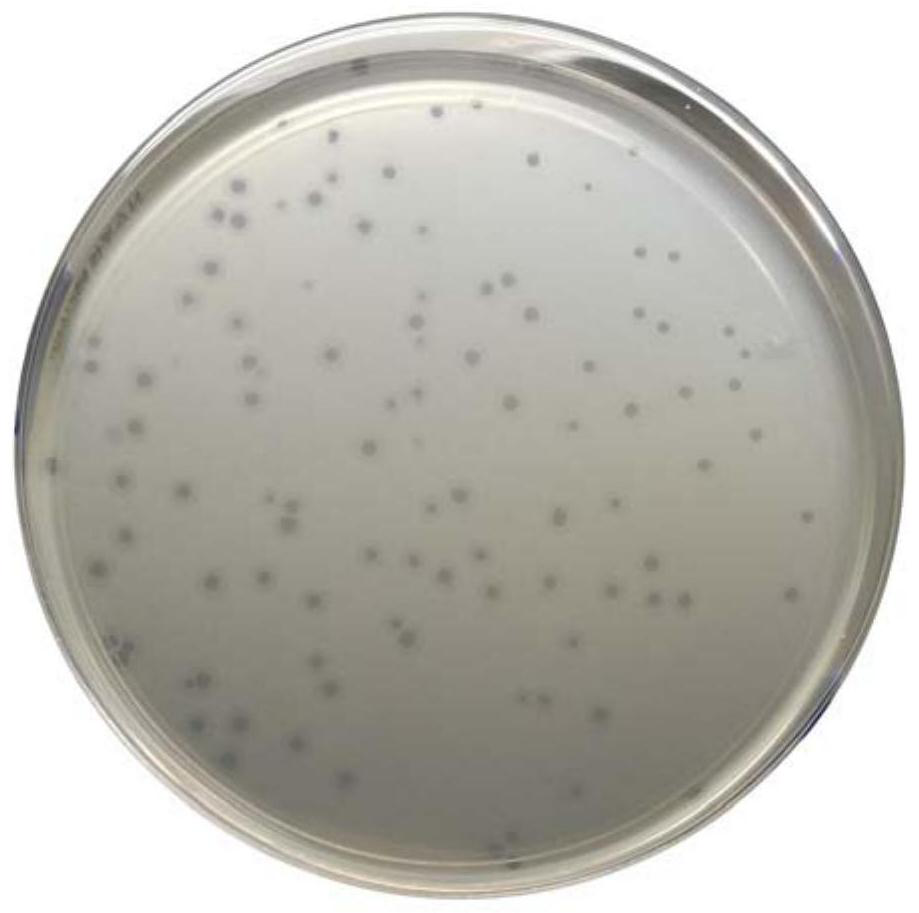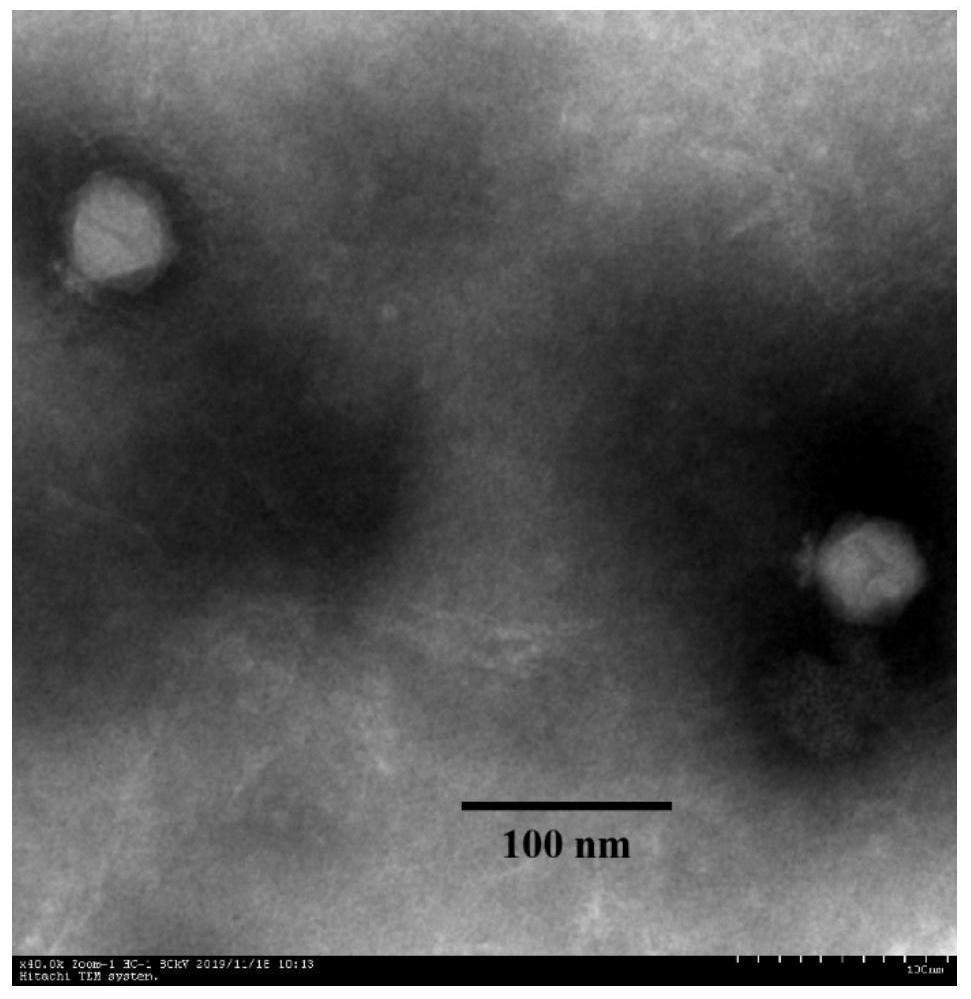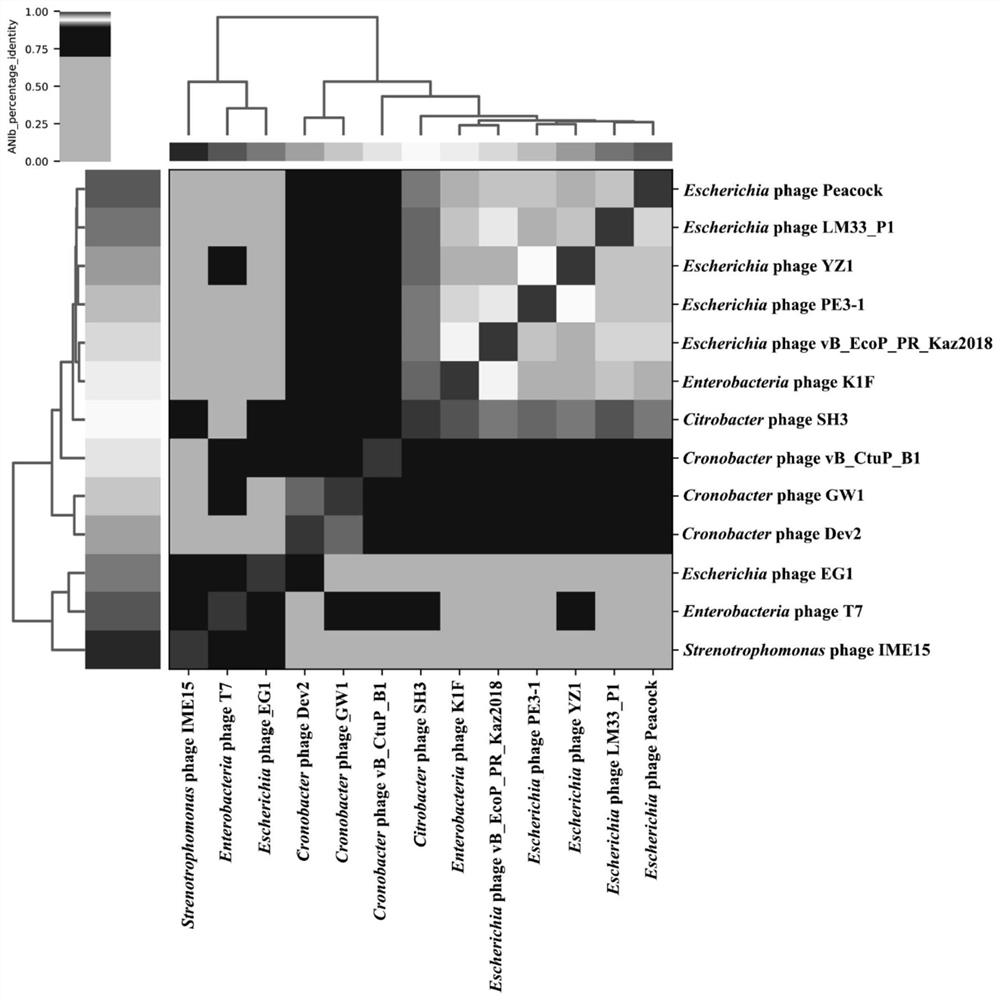Cronobacter bacteriophage and application thereof
A technology of Cronobacter and phage, applied in the field of microorganisms, to achieve the effects of good phage source, good acid-base and temperature tolerance, and good stability
- Summary
- Abstract
- Description
- Claims
- Application Information
AI Technical Summary
Problems solved by technology
Method used
Image
Examples
Embodiment 1
[0025] Example 1 Isolation and purification of the phage of the present invention
[0026] 1.1 Treatment and enrichment of water samples
[0027] The water samples used for the isolation of phages in the test of the present invention were collected from the urban river water in Guangzhou in 2018.
[0028] Centrifuge the water sample at 10000g for 10min to remove some solid large particles and some bacteria, and collect the supernatant. The supernatant was vacuum filtered and transferred to a clean, sterile container. Add MgSO to a final concentration of 50 mM 4 . Stir well and let stand for 15-20min. After vacuum filtration of the mixture, the supernatant was discarded and the filter membrane was collected. Cut the filter membrane into pieces, put it into a clean and sterile beaker, add an appropriate amount of eluent, and stir and mix well. Transfer the beaker to an ultrasonic cleaner, and ultrasonically elute for 4-5min to fully elute the phage particles from the fil...
Embodiment 2
[0033] Example 2 Whole genome sequencing of phage and new species identification analysis
[0034] DNase I and RNase A were added to 0.5 mL of the purified phage suspension in Example 1, proteinase K, SDS and EDTA were added after incubation at 37°C for 30 minutes, and an equal volume of phenol was added after incubation at 65°C for 30 minutes, and vortexed. Centrifuge at 12000g for 30s for 5min, transfer the upper aqueous phase to a new centrifuge tube. The phage genome was extracted by the phenol-chloroform-isoamyl alcohol method (25:24:1), vortexed for 30 s, centrifuged at 12,000 g for 5 min, and the upper aqueous phase was transferred to a new centrifuge tube; then extracted with an equal volume of chloroform, and repeated Extract until there is no smell of phenol; add an equal volume of isopropanol to the upper extraction solution, mix well, place at -20 °C for 30 min, and then centrifuge at 12000g for 20 min at 4 °C to collect the precipitate; wash the DNA with 70% eth...
Embodiment 3
[0036] Example 3 Determination of the host profile of phage
[0037] After gently mixing 0.1 mL of the bacterial culture solution in Table 1 in the logarithmic phase with 0.7% agar soft agar LB medium (5 mL), pour it on the common LB bottom plate, and dry it naturally for 15 minutes to fix the upper medium. . Then, 5 μL of phage vB_CtuP_B1 purified solution was spotted onto the solidified upper plate, and after natural drying, cultured at 37°C for 6 h or overnight, and the appearance of plaques indicated that the strain was a sensitive host. Results It can be seen from Table 1 that the phage of the present invention can lyse most of Cronobacter malonate and Cronobacter zurich, but cannot lyse other species of Cronobacter. Therefore, the phage obtained by the present invention has certain specificity to Cronobacter malonate and Cronobacter zurich (Table 1).
[0038] Table 1 Phage vB_CtuP_A24 host spectrum
[0039]
[0040]
[0041] In Table 1, "+" indicates that plaq...
PUM
 Login to View More
Login to View More Abstract
Description
Claims
Application Information
 Login to View More
Login to View More - R&D
- Intellectual Property
- Life Sciences
- Materials
- Tech Scout
- Unparalleled Data Quality
- Higher Quality Content
- 60% Fewer Hallucinations
Browse by: Latest US Patents, China's latest patents, Technical Efficacy Thesaurus, Application Domain, Technology Topic, Popular Technical Reports.
© 2025 PatSnap. All rights reserved.Legal|Privacy policy|Modern Slavery Act Transparency Statement|Sitemap|About US| Contact US: help@patsnap.com



